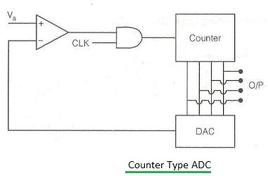Active vs. Passive Network Security in Embedded Systems
Explore the key differences between active and passive network security systems in embedded systems, including their advantages, disadvantages, and applications.
Advertisement
Explore the key differences between active and passive network security systems in embedded systems, including their advantages, disadvantages, and applications.

Explore the core differences between active and passive network sniffing, including techniques, environments, and examples.
Explore the key differences between active and passive network switches in embedded systems. Understand their characteristics, advantages, and disadvantages to choose the right switch for your network needs.
Explore the differences between active and passive power factor correction (PFC) circuits, including their working principles, advantages, and disadvantages.

Explore the differences between active and passive phased array antennas, focusing on architecture, beam steering, power amplification, cost, and applications.
Explore the differences between active and passive Power over Ethernet (PoE) to understand which method is best for powering your network devices. Understand IEEE standards, safety, and use cases.
Explore the differences between active and passive power management systems, their characteristics, applications, and a side-by-side comparison. Understand efficiency, components, and use cases.

Explore the differences between active and passive radar systems, including their principles, advantages, disadvantages, and applications in various fields.

Explore the fundamental differences between active and passive remote sensing, including energy sources, applications, advantages, and disadvantages.
Explore the differences between active and passive safety systems in electrical design, including use cases, components, and how each prevents electrical hazards.

Explore the distinctions between active and passive satellites, including their functions, advantages, disadvantages, and real-world applications.

Explore the differences between active and passive snubber circuits, their advantages, disadvantages, and key applications in electronic design.

Explore the differences between active and passive transducers, their working principles, and examples. Understand how they convert energy and their applications in measurement systems.
Understand the distinctions between Active, Passive, and Hybrid GPS systems, focusing on data transmission methods and real-time tracking capabilities.

Explore the pros and cons of adaptive antennas, including beamforming, DoA, null steering, and their impact on signal quality, coverage, and cost in wireless communication.
Explore the dynamic range of Analog-to-Digital Converters (ADCs), its definition, relevant equations, and maximum signal-to-noise ratio.

Explore the differences between ADC types: counter, flash, SAR, and dual slope. Learn about their block diagrams, equations, advantages, and disadvantages.

Explore the distinctions between Analog-to-Digital Converters (ADCs) and Digital-to-Analog Converters (DACs), their applications, and key specifications for selection.

Explore the Automatic Direction Finder (ADF), a short-range aviation navigation system using NDBs. Understand its applications, specifications, advantages, and limitations for pilots.

Explore the benefits and drawbacks of Adaptive Differential Pulse Code Modulation (ADPCM). Learn how it improves upon delta modulation and its applications in digital communication.
Advertisement